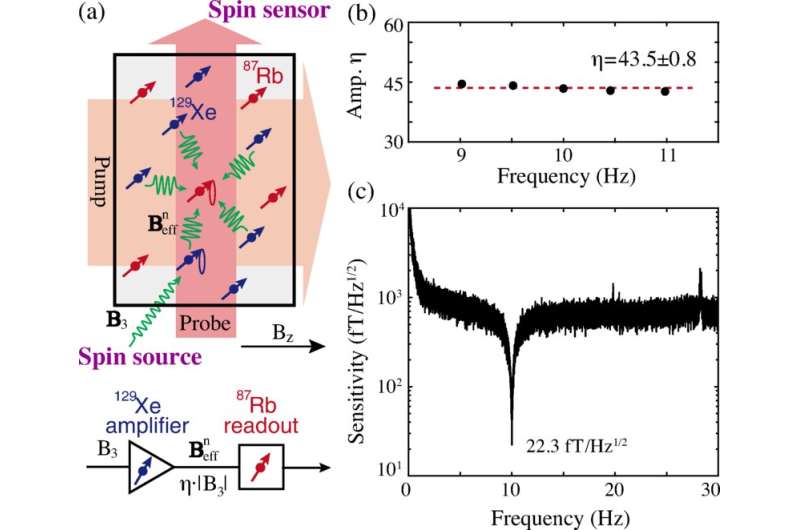Using quantum technology to constrain new particles

Yet-to-be discovered axions and axion-like particles may be the key to explaining some of the deepest puzzles of our universe, such as dark matter and charge-parity violation in strong interactions. Several recent theories have predicted that the masses of axions probably lie within the well-motivated "axion window" (0.01 meV–1 meV). However, existing laboratory searches and astrophysical observation mostly search for the axions outside the axion window.
The research team led by Prof. Peng Xinhua from University of Science and Technology of China (USTC) of the Chinese Academy of Sciences, collaborating with Prof. Dmitry Budker from Helmholtz Institution in Mainz, used a recently developed spin-based amplifier to constrain hypothetical axions within the axion window, providing a way to explore promising parameter space. The study was published in Physical Review Letters.
The exchange of axions between fermions results in an exotic dipole-dipole interaction that may be detectable by laboratory experiments. In this work, the researchers used a large collection of polarized rubidium-87 electrons and polarized xeon-129 nuclear spins as two kinds of fermions. Due to the exchange of axions, the rubidium could generate the exotic signal on the xeon nuclear spins, and then the polarized xeon-129 nuclear spins are used to resonantly search for the signal.
In particular, the researchers showed that the long-lived xeon-129 spins act as a quantum preamplifier, which can enhance the exotic signal by a factor of more than 40. Using such a technique, they provided the most stringent constraints on neutron-electron coupling mediated by axions for the axion mass from 0.03 meV to 1 meV within the axion window.
This work provides a sensitive quantum technique to realize the indirect axion searches with a recently developed spin-based amplifier, which is a substantial improvement in sensitivity in a theoretically interesting mass region for axions. The spin-based amplifier scheme, as a new implementation, extends the capabilities of spin measurements, and can be further applied to resonantly search for hypothetical particles beyond the Standard Model, such as new spin-1 dark photons.
More information: Yuanhong Wang et al, Limits on Axions and Axionlike Particles within the Axion Window Using a Spin-Based Amplifier, Physical Review Letters (2022). DOI: 10.1103/PhysRevLett.129.051801
Journal information: Physical Review Letters
Provided by Chinese Academy of Sciences





















